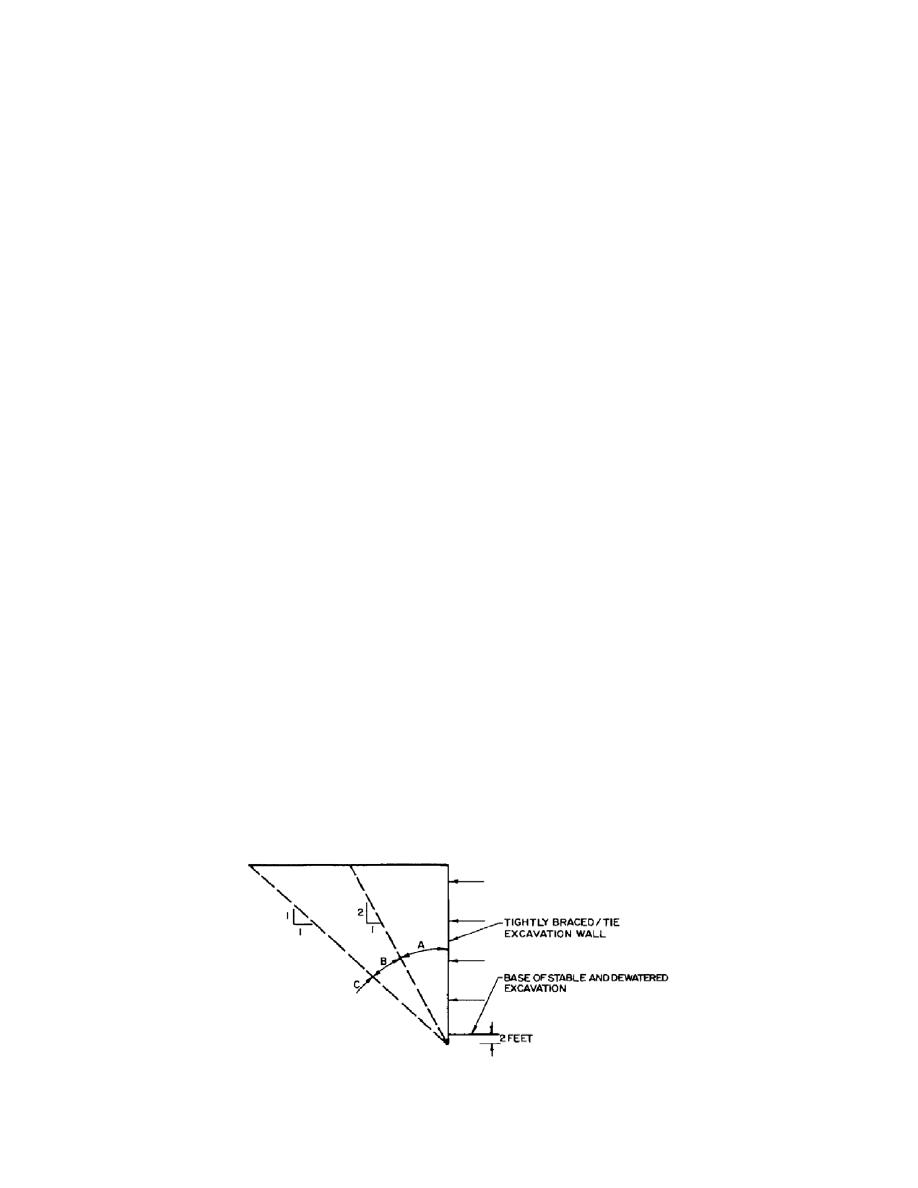
UFC 3-220-01N
15 AUGUST 2005
8-1.4
ROCK EXCAVATION
8-1.4.1
Preliminary Considerations. The primary objective is to conduct work in
such a manner that a stable excavation will be maintained and that rock outside the
excavation prism will not be adversely disturbed. Rock excavation planning must be
based on detailed geological data at the site. To the extent possible, structures to be
constructed in rock should be oriented favorably with the geological setting. For
example, tunnels should be aligned with axis perpendicular to the strike of faults or
major fractures. Downslope dip of discontinuities into an open cut should be avoided.
In general, factors that must be considered in planning, designing and constructing a
rock excavation are as follows:
Presence of strike, dip of faults, folds, fractures, and other discontinuities
In situ stresses
Groundwater conditions
Nature of material filling joints
Depth and slope of cut
Stresses and direction of potential sliding; surfaces
Dynamic loading, if any
Design life of cut as compared to weathering or deterioration rate of rock face
Rippability and/or the need for blasting
Effect of excavation and/or blasting on adjacent structures
The influence of most of these factors on excavations in rock is similar to that of
excavations in soil; see UFC 3-220-10N.
FIGURE 8-1.6
General Guidance for Underpinning
8-11



 Previous Page
Previous Page
